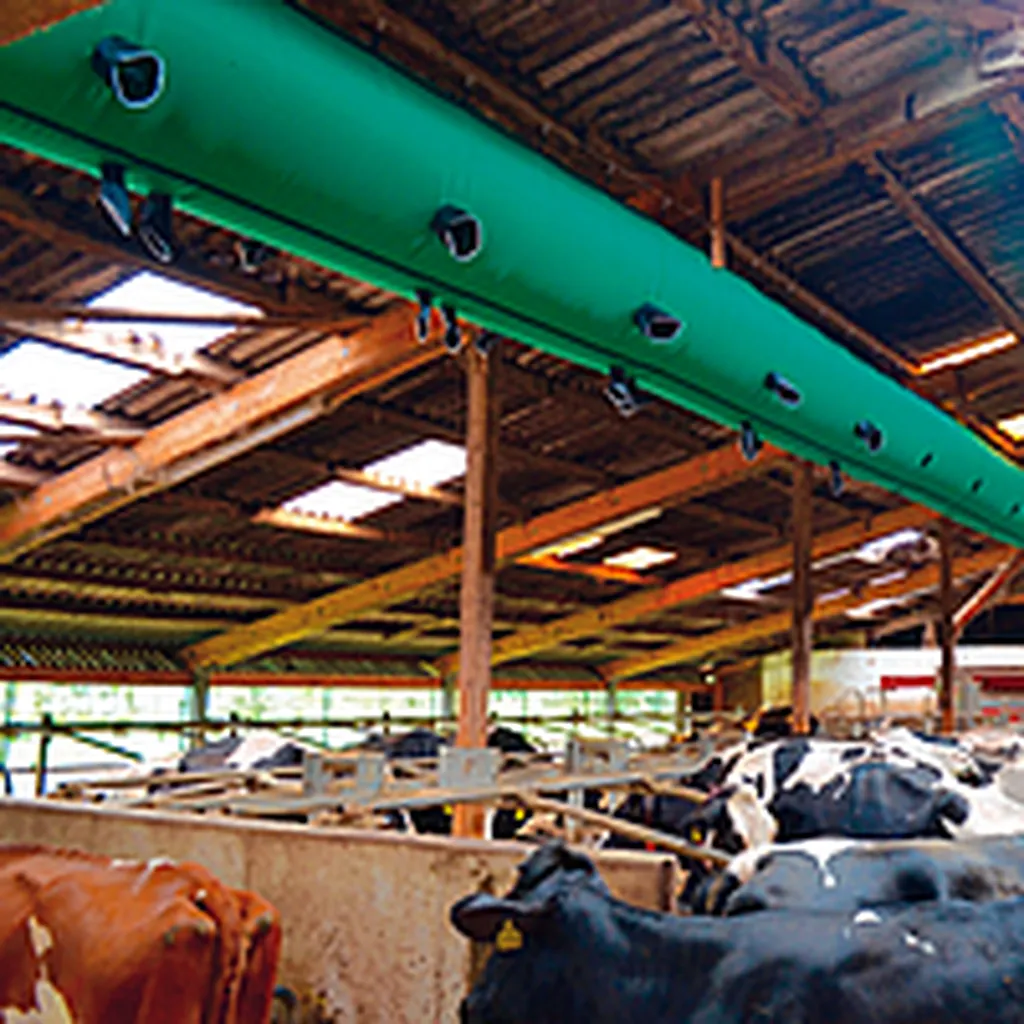In the sweltering heat of a subtropical summer, dairy calves often bear the brunt of heat stress, a problem that has largely gone unaddressed until now. A recent study published in the *Journal of Dairy Science* (translated to English as “Journal of Milk Science”) offers a promising solution, demonstrating the effectiveness of a positive pressure tube ventilation (PPTV) system in mitigating heat stress in outdoor preweaning dairy heifers. This research, led by Maverick C. Guenther from the Department of Animal and Dairy Sciences at the University of Wisconsin–Madison, could have significant implications for the dairy industry and the energy sector.
Heat stress in dairy calves is a critical issue that can lead to reduced growth rates, poor health, and decreased well-being. Traditional cooling methods are often impractical for outdoor settings, leaving young calves vulnerable. Guenther’s study, conducted from June 30 to July 6 with an average temperature-humidity index (THI) exceeding 79, aimed to change that.
The research involved two-week-old Holstein heifers housed in wire pens under a shade cloth structure. One group had access to a PPTV system adapted for their pens, providing consistent horizontal airflow with daytime misting, while the control group did not. The results were striking. “The PPTV system reduced the microenvironment ambient temperature and THI within the pen, leading to reductions in sand bedding temperature without affecting relative humidity,” Guenther explained. This led to a decrease in respiratory rates by 19 breaths per minute and a reduction in skin temperature by 0.4 to 0.7°C.
The study also revealed that heifers with access to the PPTV system spent more time standing during nighttime hours and positioned themselves closer to the PPTV outlet throughout the day. This behavior underscores the calves’ preference for the cooler microclimate created by the system.
The implications of this research are far-reaching. For the dairy industry, the PPTV system offers a practical and effective means of cooling young calves, potentially improving their health, growth, and overall well-being. For the energy sector, the development of efficient cooling systems tailored to agricultural needs could open new avenues for innovation and commercial opportunities.
Guenther’s findings, published in the *Journal of Dairy Science*, highlight the importance of addressing heat stress in dairy calves. As temperatures continue to rise, the need for effective cooling solutions becomes increasingly urgent. This research not only provides a viable solution but also paves the way for future developments in the field of agricultural technology.
The study’s results suggest that the PPTV system could be a game-changer for dairy farmers, particularly those in regions with hot and humid climates. By mitigating heat stress, this technology has the potential to enhance the productivity and sustainability of dairy operations. Moreover, the system’s efficiency and adaptability make it a promising candidate for integration into existing farming practices.
As the agricultural sector continues to evolve, the demand for innovative solutions to combat heat stress will only grow. Guenther’s research offers a glimpse into the future of dairy farming, where technology and science converge to create a more resilient and sustainable industry. The PPTV system is not just a cooling solution; it is a step towards a more efficient and humane approach to dairy farming.

